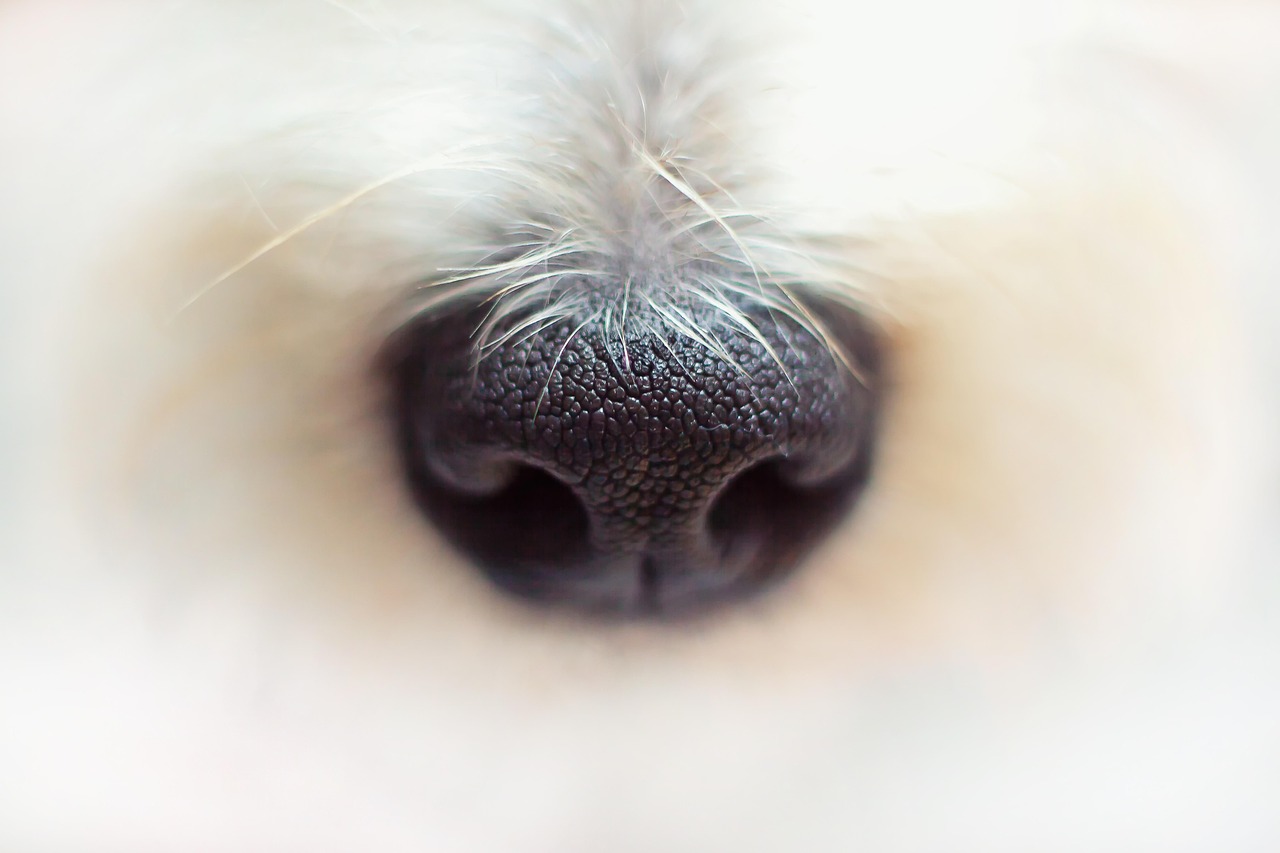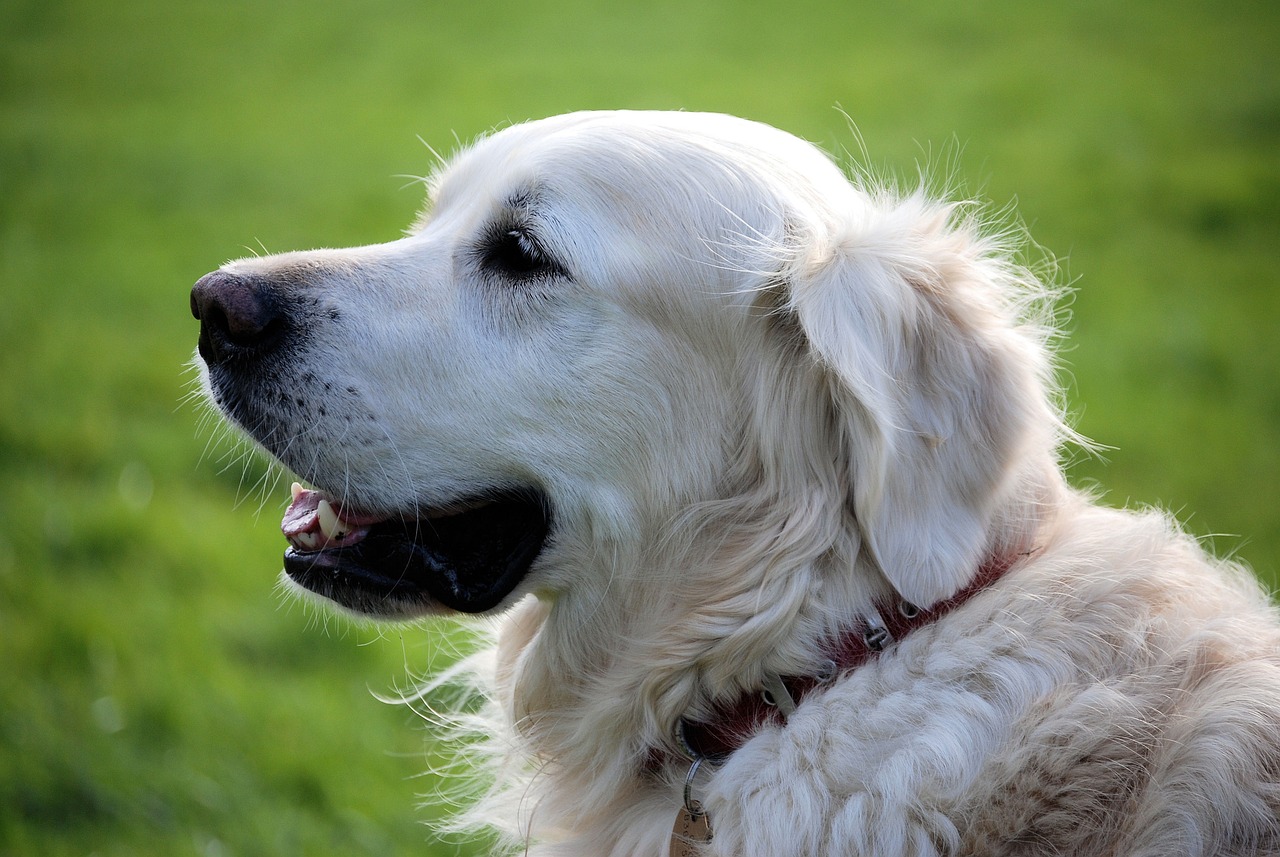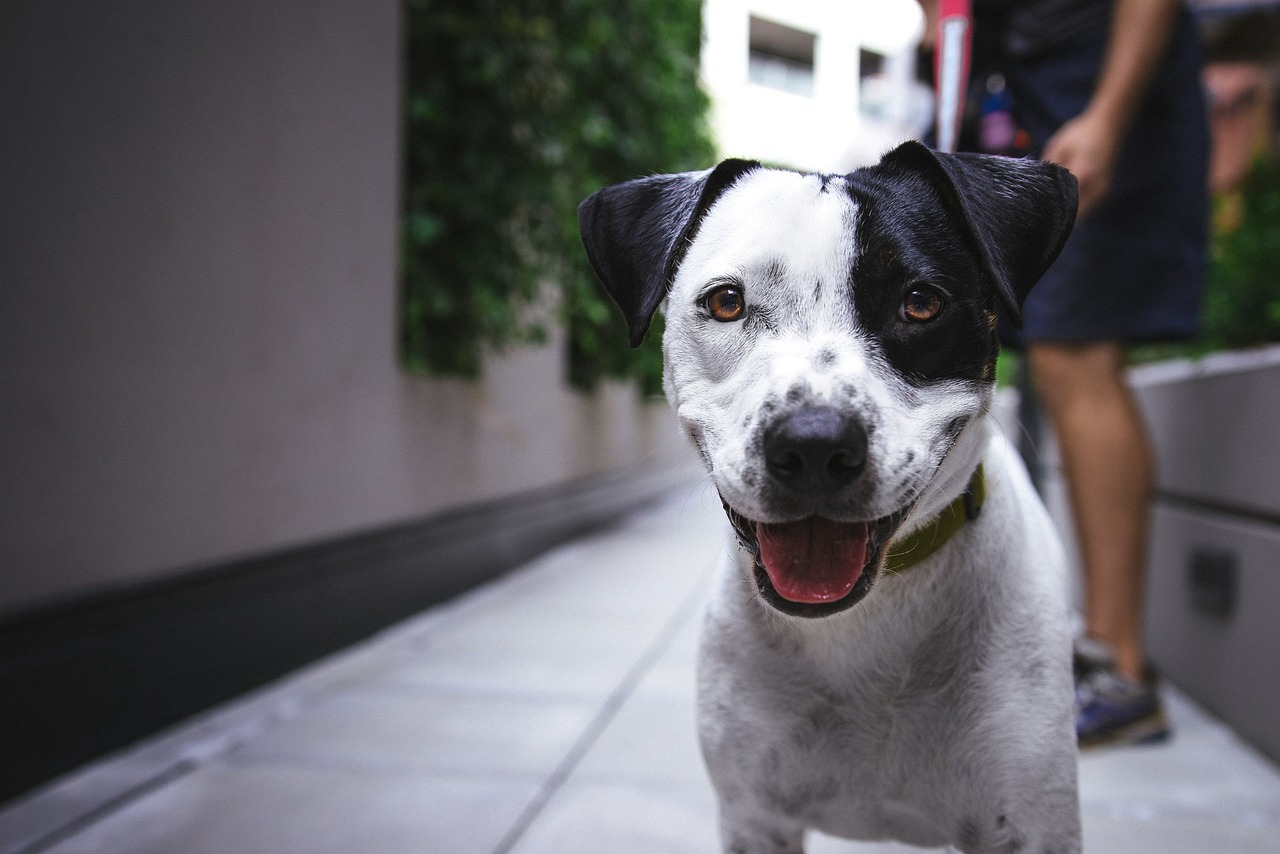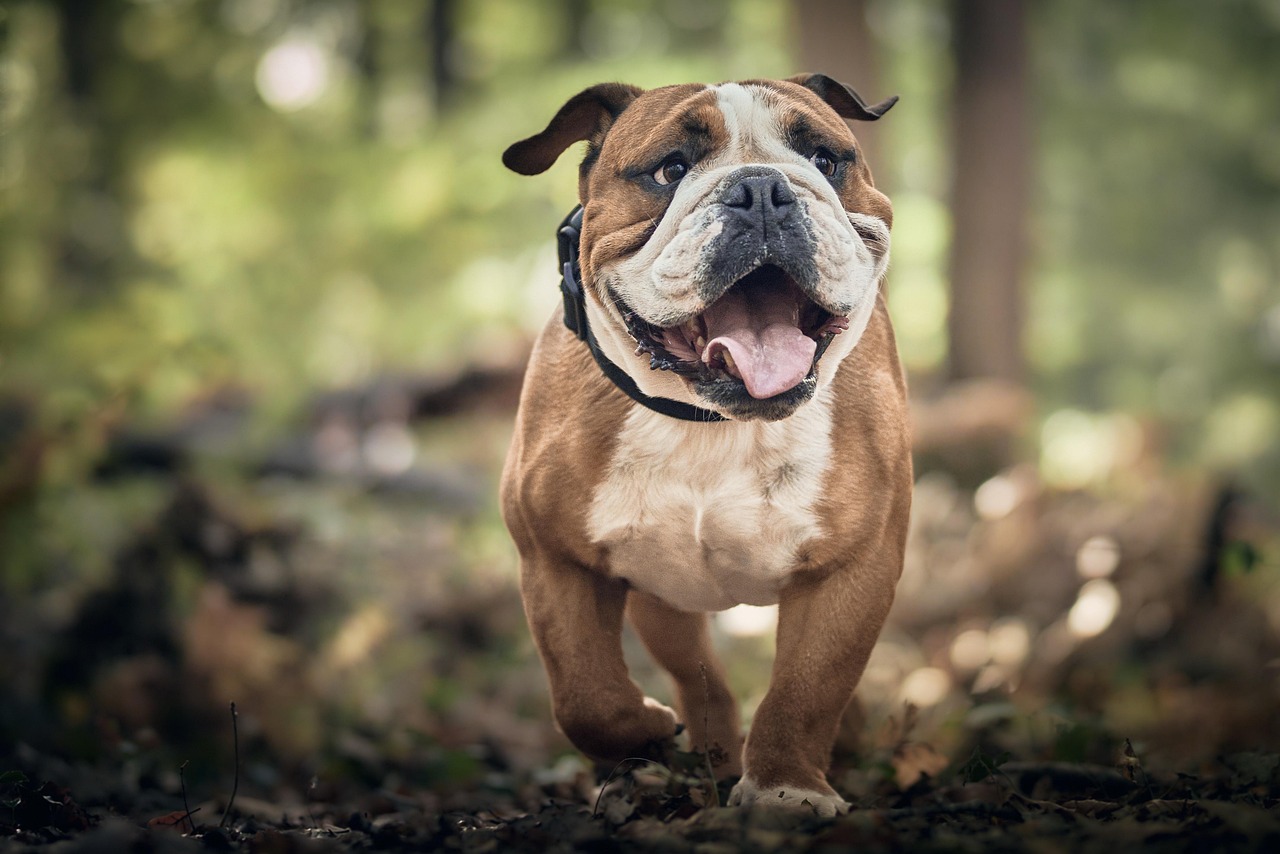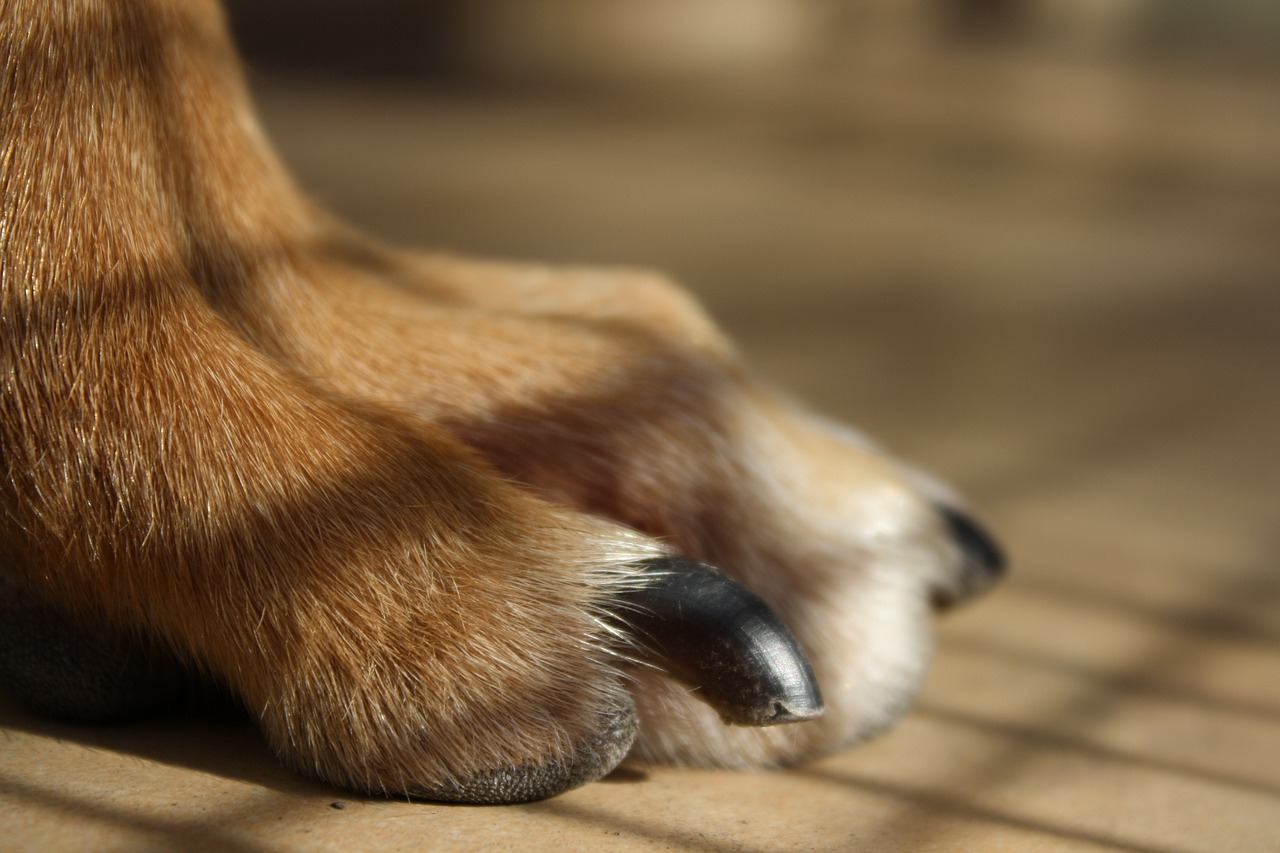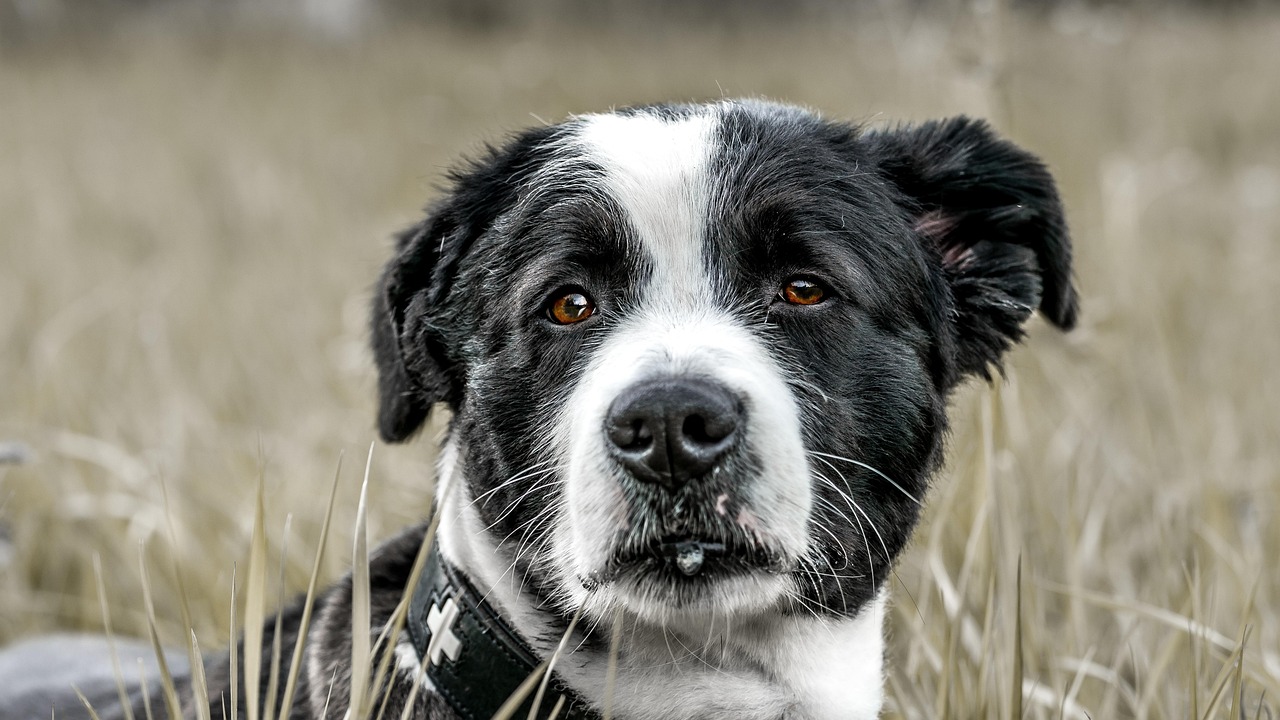This article provides essential information on how to respond immediately after a dog bite on the leg, including first aid steps, when to seek medical help, and preventive measures.
Understanding Dog Bites
Dog bites can vary in severity and can occur in various situations, such as during play or as a defensive reaction. Understanding the nature of dog bites is crucial for effective response and treatment. Factors such as the dog’s behavior, size, and the circumstances leading to the bite can influence the severity of the injury.
Immediate First Aid Steps
Taking immediate action after a dog bite can significantly reduce the risk of infection and complications. Here are the essential first aid steps you should follow:
- Cleaning the Wound: Properly cleaning the bite wound is vital. Use soap and water to cleanse the area thoroughly for at least 5-10 minutes.
- Assessing Wound Severity: Look for signs of deep punctures, excessive bleeding, or tissue damage to determine the severity of the bite.
- Applying Pressure to Stop Bleeding: If the wound is bleeding, apply gentle pressure with a clean cloth or bandage until the bleeding stops.
- Using Antibiotic Ointment: After cleaning, applying an antibiotic ointment can help prevent infection. Ensure it is suitable for your skin type.
When to Seek Medical Attention
Not all dog bites require a doctor’s visit, but certain symptoms indicate the need for professional care:
- Signs of Infection: Watch for increased redness, swelling, warmth, or pus, which are critical for timely medical intervention.
- Deep Wounds and Punctures: Deep or puncture wounds may require stitches or other medical treatments. If the wound is severe, do not hesitate to seek help.
Legal Considerations After a Dog Bite
Understanding your legal rights and responsibilities following a dog bite incident is essential for protecting yourself:
- Reporting the Incident: Report the dog bite to local authorities to prevent future incidents and ensure proper documentation.
- Understanding Liability: Familiarize yourself with local laws regarding dog ownership and liability, as this can influence your next steps.
Preventing Future Dog Bites
Taking proactive measures can reduce the likelihood of dog bites in the future:
- Recognizing Dog Body Language: Understanding a dog’s body language can help you avoid dangerous situations. Look for signs of aggression or fear.
- Safe Interactions with Dogs: Always approach dogs cautiously and ask the owner for permission before interacting.
Conclusion
Responding promptly and effectively to a dog bite is crucial for your health and safety. By following the outlined steps and understanding preventive measures, you can protect yourself and others from the risks associated with dog bites.

Understanding Dog Bites
Dog bites are a serious issue that can occur in a variety of situations, and their severity can range from minor scratches to deep puncture wounds. Understanding the nature of dog bites is crucial for effective response and treatment. This knowledge not only helps in immediate care but also aids in preventing future incidents.
There are several factors that can contribute to a dog bite, including:
- Fear or Anxiety: Dogs may bite when they feel threatened or scared.
- Protectiveness: A dog may defend its territory or owner from perceived threats.
- Playfulness: Sometimes, dogs may play too roughly, resulting in accidental bites.
- Health Issues: Dogs in pain or suffering from illness may exhibit aggressive behavior.
Recognizing the context of a dog bite can significantly influence the response. For instance, a bite from a familiar dog may require different handling compared to a bite from a stray. It’s essential to assess the situation carefully.
Moreover, understanding the severity of the bite is critical. Bites can be categorized into:
- Minor Bites: Superficial wounds that may only require basic first aid.
- Moderate Bites: Deeper punctures that may need medical evaluation.
- Severe Bites: Wounds that cause significant bleeding or damage to underlying tissues, necessitating immediate medical attention.
In conclusion, being aware of the different situations that can lead to dog bites and their severity is vital. This knowledge not only assists in immediate care but also plays a significant role in preventing future incidents. Always approach dogs with caution and respect their space to minimize the risk of bites.

Immediate First Aid Steps
Taking immediate action after a dog bite is crucial for preventing infection and complications. Here are the essential first aid steps you should follow:
- Stay Calm: It’s important to remain calm to effectively assess the situation and provide care.
- Assess the Bite: Determine the severity of the bite. Look for signs of bleeding, swelling, or deep punctures.
- Wash the Wound: Clean the bite area gently with soap and warm water for at least 5-10 minutes. This helps to remove bacteria and debris.
- Control Bleeding: If the wound is bleeding, apply gentle pressure with a clean cloth or bandage until the bleeding stops. Elevate the injured area if possible.
- Apply Antibiotic Ointment: Once the wound is clean and bleeding has stopped, apply an over-the-counter antibiotic ointment to help prevent infection.
- Cover the Wound: Use a sterile bandage to cover the wound, protecting it from dirt and bacteria.
- Monitor for Infection: Keep an eye on the wound for signs of infection, such as increased redness, swelling, or pus. Seek medical attention if these symptoms occur.
When to Seek Medical Attention
If the bite is deep, bleeding excessively, or if the dog’s vaccination status is unknown, it’s essential to consult a healthcare professional promptly. Additionally, if you experience any signs of infection, do not hesitate to seek medical help.
Conclusion: By following these immediate first aid steps after a dog bite, you can significantly reduce the risk of complications and promote healing. Remember, your health and safety are paramount, so don’t hesitate to seek professional assistance when necessary.
Cleaning the Wound
When dealing with a dog bite, proper wound cleaning is crucial to minimize the risk of infection and promote healing. The first step in this process is to ensure that you have the right supplies on hand. You will need:
- Gentle soap
- Clean, running water
- Sterile gauze or a clean cloth
- Antibiotic ointment (optional)
To begin cleaning the wound, follow these steps:
- Rinse the Bite Area: Start by rinsing the bite area under clean, running water for at least 5 to 10 minutes. This helps to flush out dirt and bacteria.
- Apply Soap: Use a mild soap to gently cleanse the area around the wound. Avoid scrubbing the wound directly, as this can cause further damage.
- Rinse Again: After applying soap, rinse the area thoroughly with water to remove any soap residue.
- Pat Dry: Use a sterile gauze or a clean cloth to gently pat the area dry. Avoid rubbing, as this can irritate the wound.
- Apply Antibiotic Ointment: If desired, apply a thin layer of antibiotic ointment to help prevent infection.
Once the wound is cleaned, it’s essential to monitor it for any signs of infection, which may include increased redness, swelling, or discharge. If any of these symptoms occur, seek medical attention promptly.
Remember, proper wound care not only aids in recovery but also significantly reduces the risk of complications. Always prioritize safety and hygiene when handling any type of injury.
Assessing Wound Severity
is a critical step in determining the appropriate response after a dog bite. Understanding the nature of the injury can significantly influence your next actions, ensuring that you either manage the situation at home or seek professional medical assistance.
When evaluating a dog bite, it is essential to look for specific indicators that can help classify the wound as minor or severe. Here are some key factors to consider:
- Depth of the Wound: Minor bites often result in superficial scratches or small punctures, while severe bites may involve deep punctures that penetrate the skin and underlying tissues.
- Bleeding: If the wound is bleeding excessively, it is a sign of a more serious injury. Minor wounds may only ooze blood, whereas severe wounds can cause significant blood loss.
- Location of the Bite: Bites on sensitive areas, such as the face, neck, or joints, may require more urgent medical attention compared to bites on less critical areas.
- Signs of Infection: Look for redness, swelling, warmth, or pus around the wound. These symptoms indicate an infection, which can complicate recovery.
After assessing the wound, if you determine that it is severe, it is crucial to seek medical help immediately. Even if the wound appears minor, it is wise to consult a healthcare professional, especially if you notice any of the above signs. Remember, timely intervention can prevent complications and promote faster healing.
In summary, understanding how to assess the severity of a dog bite is vital for ensuring proper treatment. By closely examining the wound and recognizing the signs of a serious injury, you can take the necessary steps to protect your health and well-being.
Applying Pressure to Stop Bleeding
is a critical first aid step when dealing with any type of wound, including dog bites. If you find yourself in a situation where a dog has bitten you or someone else, it is essential to act quickly to control the bleeding and minimize further injury.
When a wound is bleeding, the first thing you should do is to remain calm. Panic can make the situation worse. Here are the steps you should follow:
- Gather Supplies: Ensure you have a clean cloth, sterile bandage, or gauze ready to use.
- Apply Gentle Pressure: Place the clean cloth or bandage directly over the wound. Use your hands to apply gentle but firm pressure. This action helps to slow down or stop the bleeding.
- Maintain Pressure: Keep the pressure applied for at least 10 minutes without lifting the cloth to check if the bleeding has stopped. If the cloth becomes soaked with blood, do not remove it; instead, add more layers on top.
- Elevate the Wound: If possible, elevate the injured area above the level of the heart. This can help reduce blood flow to the area and assist in controlling the bleeding.
In situations where the bleeding does not stop after applying pressure for 10 minutes, or if the wound is deep and severe, it is crucial to seek immediate medical attention. Professional care may be necessary to treat the wound properly and prevent complications such as infection.
Remember, the key to managing a bleeding wound effectively is to act quickly and calmly. By applying pressure and following the steps outlined, you can help ensure a better outcome for yourself or the injured party.
In conclusion, knowing how to apply pressure to stop bleeding is an invaluable skill. It can make a significant difference in the healing process and overall recovery after a dog bite or any other injury.
Using Antibiotic Ointment
When dealing with a dog bite, one of the crucial steps in the first aid process is applying antibiotic ointment after cleaning the wound. This step is pivotal in preventing infection and promoting healing.
Once you have thoroughly cleaned the wound with soap and water, it is essential to choose an appropriate antibiotic ointment. Look for products that contain bacitracin, neomycin, or polymyxin B, as these ingredients are effective in combating bacteria. Always check for any allergies before application.
To apply the ointment:
- Gently pat the area dry with a clean cloth.
- Use a clean finger or a cotton swab to apply a thin layer of the ointment directly onto the wound.
- Be careful not to use excessive amounts, as this can lead to irritation.
After applying the ointment, cover the wound with a sterile bandage to keep it clean and protected. Change the bandage daily or whenever it becomes wet or dirty. This will help maintain a moist environment that is conducive to healing.
Additionally, monitor the wound for any signs of infection, such as increased redness, swelling, or discharge. If any of these symptoms occur, seek medical attention promptly. Remember, while antibiotic ointments are helpful, they are not a substitute for professional medical care when needed.
In summary, applying antibiotic ointment is a vital step in the first aid process after a dog bite. By choosing the right product and following proper application techniques, you can significantly reduce the risk of infection and promote faster healing.

When to Seek Medical Attention
Understanding when to seek medical attention after a dog bite is crucial for ensuring your health and safety. While some minor bites may not require a visit to the doctor, it is essential to recognize specific symptoms that indicate the need for professional care. This knowledge can be lifesaving.
Identifying Serious Symptoms
- Signs of Infection: If you notice increased redness, swelling, warmth around the wound, or discharge of pus, these are clear indicators of infection. Prompt medical evaluation is necessary to prevent the infection from spreading.
- Deep Wounds: Any bite that results in deep punctures or gaping wounds may require stitches or surgical intervention. Do not hesitate to seek medical help in such cases.
- Excessive Bleeding: If the bleeding does not stop after applying pressure for ten minutes, this is a sign that you need immediate medical assistance.
- Allergic Reactions: Some individuals may experience allergic reactions to dog saliva, which can manifest as swelling, hives, or difficulty breathing. If you experience these symptoms, seek emergency care.
- Exposure to Rabies: If the dog that bit you is unknown or appears sick, it is crucial to consult a healthcare provider regarding rabies exposure. Rabies is a serious viral infection that can be fatal if not treated promptly.
Importance of Timely Intervention
Timely medical intervention can significantly reduce the risk of complications, including severe infections or long-term health issues. Always err on the side of caution when it comes to your health. If you are unsure about the severity of a dog bite, it is better to seek medical advice.
Conclusion
Being aware of the symptoms that necessitate medical attention after a dog bite can make a significant difference in recovery. When in doubt, consult a healthcare professional to ensure that you receive the appropriate care and treatment.
Signs of Infection
are critical indicators that should never be overlooked after a dog bite. Recognizing these signs early can be the difference between a minor issue and a serious health concern. Here, we will explore the key symptoms to watch for and the importance of timely medical intervention.
- Increased Redness: One of the first signs of infection is a noticeable increase in redness around the bite area. If the skin appears more inflamed than the surrounding tissue, this could indicate that bacteria are present.
- Swelling: Swelling is another common symptom. If the area around the bite becomes puffy or swollen, it may be a sign that the body is responding to an infection.
- Pus Formation: The presence of pus is a clear indication of infection. If you notice any discharge that is yellow, green, or foul-smelling, it is essential to seek medical help immediately.
- Pain and Tenderness: Increased pain or tenderness around the wound can also signal an infection. If the pain worsens rather than improves over time, medical attention is necessary.
- Fever: A fever may develop as the body fights off an infection. If you experience a fever following a dog bite, it is crucial to consult a healthcare professional.
In conclusion, being vigilant about infection signs can significantly impact your recovery after a dog bite. If you notice any of these symptoms, do not hesitate to seek medical assistance. Timely intervention can prevent complications and ensure a smoother healing process.
Deep Wounds and Punctures
When it comes to injuries, deep wounds and punctures can pose significant risks. These types of injuries often occur due to animal bites, sharp objects, or accidents. It is crucial to understand how to properly assess and respond to such wounds to prevent complications.
Deep wounds are characterized by their depth, which can affect not only the skin but also underlying tissues, muscles, and even bones. Puncture wounds, on the other hand, are caused by sharp, pointed objects that penetrate the skin, leaving a small opening. Both types of injuries can lead to serious complications if not treated promptly and appropriately.
- Recognizing the Severity: Assess the wound to determine its severity. Look for signs of deep penetration, excessive bleeding, or if the wound is larger than a quarter inch in diameter.
- Immediate First Aid: Clean the wound gently with soap and water to remove any dirt or debris. Avoid using alcohol or hydrogen peroxide, as these can irritate the tissue.
- Applying Pressure: If the wound is bleeding, apply gentle pressure with a clean cloth or bandage until the bleeding stops.
- Seek Medical Attention: If the wound is deep, continues to bleed, or shows signs of infection such as redness, swelling, or pus, it is essential to seek medical help immediately. Stitches or other medical treatments may be required to ensure proper healing.
Knowing when to seek help can alleviate complications and promote faster recovery. In cases of deep wounds or punctures, timely intervention can significantly reduce the risk of infection or other serious health issues.
In conclusion, understanding the nature of deep wounds and punctures is vital. Always prioritize safety and proper wound care to protect your health.

Legal Considerations After a Dog Bite
Experiencing a dog bite can be a traumatic event, and understanding the legal implications that follow is vital for your protection and peace of mind. Here, we will delve into the essential legal considerations you should be aware of after a dog bite incident.
- Reporting the Incident: It is important to report the dog bite to local authorities. This not only ensures that the incident is documented but also helps prevent future occurrences. Local animal control agencies can provide guidance on the next steps.
- Understanding Liability: Determining liability is crucial. In many cases, the dog owner may be held responsible for the actions of their pet. Familiarize yourself with local laws regarding dog ownership and liability, as these can vary significantly by jurisdiction.
- Gathering Evidence: Collecting evidence is essential for any potential legal action. Take photographs of your injuries, the location of the bite, and the dog involved. Witness statements can also be invaluable in supporting your case.
- Consulting a Legal Professional: If your injuries are severe or if you face challenges in receiving compensation, consulting with a personal injury attorney who specializes in dog bite cases can be beneficial. They can provide expert advice tailored to your situation.
- Understanding Medical Expenses: Keep track of all medical expenses related to the dog bite. This includes hospital visits, medications, and any follow-up treatments. These records will be essential if you seek compensation.
- Insurance Claims: If the dog owner has liability insurance, you may be able to file a claim for your injuries. Understanding how to navigate insurance claims can help you recover costs associated with the incident.
In conclusion, being informed about your legal rights and responsibilities following a dog bite incident is critical. Taking the appropriate steps can safeguard your interests and ensure that accountability is upheld. Remember, seeking legal counsel can provide clarity and direction in these challenging situations.
Reporting the Incident
When faced with the unfortunate event of a dog bite, it is crucial to take immediate action not only for your health but also for the safety of others. to local authorities is a vital step that can lead to significant outcomes.
First and foremost, reporting the dog bite ensures that there is an official record of the event. This documentation is essential for various reasons:
- Preventing Future Incidents: Authorities can take necessary actions, such as investigating the dog’s behavior and the owner’s responsibility, to prevent similar occurrences in the future.
- Public Safety: By reporting the bite, you contribute to community safety. Local agencies can monitor dangerous dogs and take appropriate measures to protect the public.
- Insurance Claims: An official report is often required for insurance purposes. It can help in processing claims for medical expenses related to the bite.
- Legal Protection: If you decide to pursue legal action against the dog owner, having a report can strengthen your case and provide necessary evidence.
Moreover, it’s important to understand that reporting the incident is not just about the bite itself; it is also about educating the community on responsible pet ownership. Authorities can provide resources and information to dog owners on how to manage their pets safely, ultimately fostering a safer environment for everyone.
In conclusion, while dealing with the aftermath of a dog bite can be overwhelming, taking the time to report the incident to local authorities is a critical step. It not only helps you ensure your own safety but also contributes to the welfare of your community. Remember, your actions can make a difference.
Understanding Liability
in dog bite incidents is crucial for anyone involved. When a dog bite occurs, determining who is legally responsible can significantly affect the next steps you take. It is essential to familiarize yourself with local laws that govern dog ownership and liability, as these can vary greatly from one jurisdiction to another.
In many cases, the dog owner may be held liable for the actions of their pet, especially if the dog has a history of aggression or if the owner was negligent in controlling their animal. However, there are instances where liability may not be so clear-cut. For example, if the victim was trespassing or provoking the dog, this could influence the owner’s liability. Understanding these nuances is vital.
Additionally, local laws often dictate specific dog bite statutes that outline the responsibilities of dog owners and the rights of victims. Familiarizing yourself with these laws can help you understand whether you have a valid claim for damages. Some states follow a strict liability rule, meaning the owner is responsible regardless of the dog’s previous behavior, while others may consider the circumstances surrounding the bite.
Furthermore, it is advisable to document the incident thoroughly. This includes taking photographs of the injuries, gathering witness statements, and reporting the incident to local authorities. This documentation can be invaluable if you decide to pursue legal action.
- Know the local laws: Research your area’s dog ownership laws and liability regulations.
- Assess the situation: Consider factors like provocation or trespassing that may affect liability.
- Document everything: Gather evidence to support your case if needed.
In conclusion, understanding liability in dog bite incidents is essential for navigating the aftermath of such events. Being informed about local laws and documenting the incident can empower you to make informed decisions regarding your next steps.
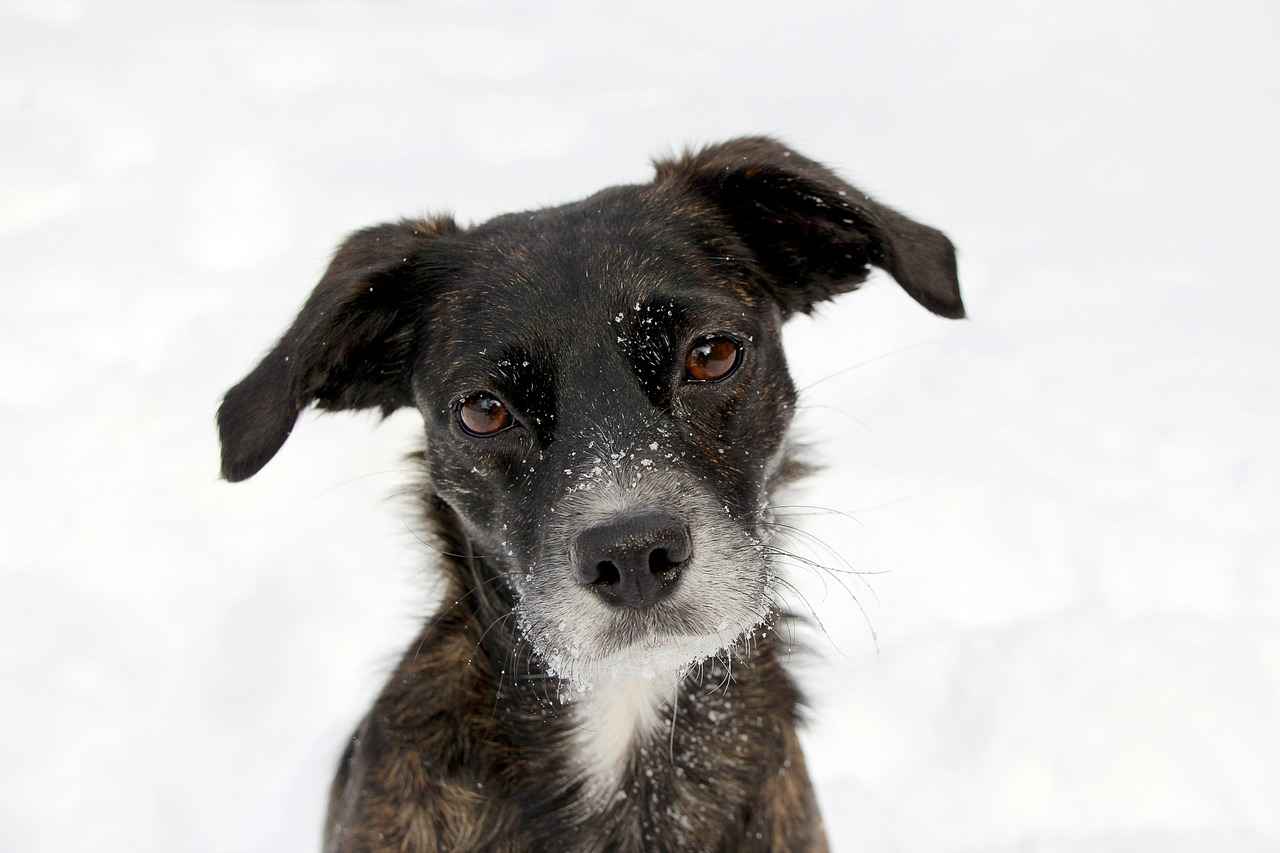
Preventing Future Dog Bites
Dog bites can have serious consequences, both physically and emotionally. To ensure safety for both humans and dogs, it is essential to take proactive measures. Understanding dog behavior and implementing effective safety tips can significantly reduce the likelihood of dog bites in the future.
Recognizing Dog Body Language
Being able to interpret a dog’s body language is crucial in preventing bites. Dogs communicate their feelings through posture, facial expressions, and movements. For instance, a dog that is feeling threatened may display signs such as:
- Raised hackles: This can indicate agitation or fear.
- Growling: A clear warning that the dog is uncomfortable.
- Showing teeth: This is often a sign of aggression.
Understanding these signals can help you avoid approaching a dog that may feel threatened or defensive.
Safe Interactions with Dogs
When interacting with dogs, safety should always be a priority. Here are some essential tips for safe interactions:
- Always ask for permission: Before approaching a dog, especially one that is unfamiliar, always ask the owner for permission.
- Approach calmly: Sudden movements can startle dogs. Approach slowly and calmly to avoid provoking a reaction.
- Let the dog come to you: Allow the dog to approach you first; this gives them control over the interaction.
Education and Awareness
Educating children and adults about dog safety is vital. Teaching children how to interact with dogs respectfully can prevent many incidents. Awareness campaigns in communities can also promote responsible dog ownership and safe practices.
Conclusion
By understanding dog behavior and following safety tips, we can significantly reduce the risk of dog bites. Taking these proactive measures not only protects individuals but also contributes to a safer environment for dogs and their owners.
Recognizing Dog Body Language
Understanding a dog’s body language is essential for any dog owner or enthusiast. By learning the signs of aggression and fear, you can prevent potentially dangerous situations and create a safer environment for both the dog and people around it.
- Relaxed Body Posture: When a dog is relaxed, its body appears loose, and the tail may be wagging gently. This indicates that the dog is comfortable and not feeling threatened.
- Signs of Aggression: Look for raised hackles, a stiff stance, and a growl. These signals indicate that a dog feels threatened and may be ready to defend itself.
- Fearful Behavior: A dog showing fear may cower, tuck its tail between its legs, or attempt to hide. Understanding these signs can help you approach the dog more cautiously.
- Playful Signals: A dog that is inviting play often displays a play bow, where it lowers its front legs while keeping its rear end raised. This is a clear sign of a friendly disposition.
Recognizing these signals is not only about avoiding bites but also about enhancing the bond between you and the dog. Dogs communicate their feelings through body language, and being attuned to these cues can lead to better interactions.
Additionally, understanding a dog’s body language can help you identify when it needs space or when it is in pain. For example, a dog that suddenly becomes rigid or avoids eye contact may be feeling unwell or anxious.
In conclusion, by learning to recognize and interpret a dog’s body language, you can foster a safer and more positive environment. Always remember that a dog’s behavior is a reflection of its feelings, and being aware of these signs can significantly enhance your relationship with your canine companion.
Safe Interactions with Dogs
Engaging with dogs can be a rewarding experience, but it is vital to prioritize safety for both yourself and the dog. Understanding how to interact safely can significantly reduce the risk of dog bites. Here are some essential guidelines to ensure positive interactions with our canine friends.
- Approach with Caution: Always approach a dog slowly and calmly. Sudden movements can startle them and lead to defensive reactions.
- Ask for Permission: Before petting or interacting with a dog, always ask the owner for permission. This shows respect for the owner’s authority and the dog’s comfort.
- Observe Body Language: Pay attention to the dog’s body language. Signs of stress or aggression, such as growling, baring teeth, or a stiff posture, indicate that it is best to keep your distance.
- Give Space: Allow the dog to come to you if it feels comfortable. This gives the dog control over the interaction and helps build trust.
- Use Gentle Touch: If the owner permits you to pet the dog, use a gentle touch. Avoid reaching over the dog’s head, as this can be perceived as a threat.
By following these simple yet effective techniques, you can foster a safe and enjoyable environment for both yourself and the dog. It is crucial to remember that not all dogs are friendly or comfortable around strangers. Always prioritize safety and mutual respect in every interaction.
Conclusion: Practicing safe interaction techniques can protect you and others from dog bites. By approaching dogs cautiously, asking for permission, and being mindful of their body language, you can ensure a positive experience for everyone involved.

Conclusion
Responding promptly and effectively to a dog bite is crucial for your health and safety. It is essential to take immediate action to minimize the risk of complications such as infections or excessive bleeding. Following the outlined steps can help you manage the situation appropriately.
First, it is important to understand the nature of dog bites. They can vary significantly in severity, and knowing how to assess the situation can guide your response. For instance, minor bites may require basic first aid, while severe bites could necessitate professional medical attention.
After ensuring your safety, the first step is to clean the wound thoroughly with soap and water. This action is vital in reducing the risk of infection. If the wound is bleeding, apply gentle pressure with a clean cloth or bandage until the bleeding stops. Once the area is clean, using an antibiotic ointment can further protect against infection.
Recognizing when to seek medical help is equally important. If you notice signs of infection, such as increased redness, swelling, or pus, it’s critical to consult a healthcare professional. Additionally, deep wounds may require stitches, so understanding the severity of the bite can save you from potential complications.
Beyond immediate care, it is also essential to consider the legal aspects following a dog bite. Reporting the incident to local authorities can help prevent future occurrences and ensure proper documentation. Understanding liability can also play a significant role in your next steps.
Finally, taking proactive measures to prevent future dog bites is vital. Educating yourself about dog behavior and practicing safe interaction techniques can significantly reduce the likelihood of such incidents. Always approach dogs cautiously and be aware of their body language to avoid dangerous situations.
In conclusion, by being informed and prepared, you can protect yourself and others from the risks associated with dog bites. Your health and safety are paramount, and a swift, knowledgeable response can make all the difference.
Frequently Asked Questions
- What should I do immediately after a dog bite?
First, clean the wound thoroughly with soap and water. Apply gentle pressure to stop any bleeding, and then use an antibiotic ointment to prevent infection.
- When is it necessary to seek medical attention?
If you notice signs of infection, such as increased redness, swelling, or pus, or if the bite is deep and bleeding excessively, it’s crucial to consult a doctor right away.
- How can I prevent future dog bites?
Understanding dog body language is key! Always approach dogs with caution, ask the owner for permission, and be aware of signs that the dog may feel threatened or aggressive.
- What are my legal rights after a dog bite?
You should report the incident to local authorities to document it. Understanding the liability laws in your area can also help you determine your next steps.
- Are all dog bites serious?
No, not all dog bites are severe. However, assessing the wound and recognizing any symptoms of infection is essential to ensure your health and safety.
